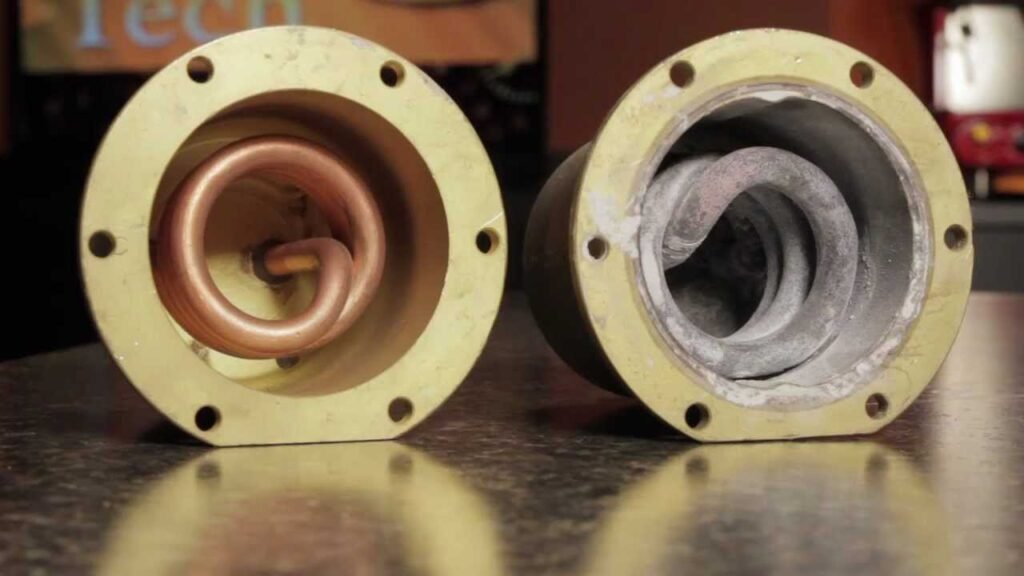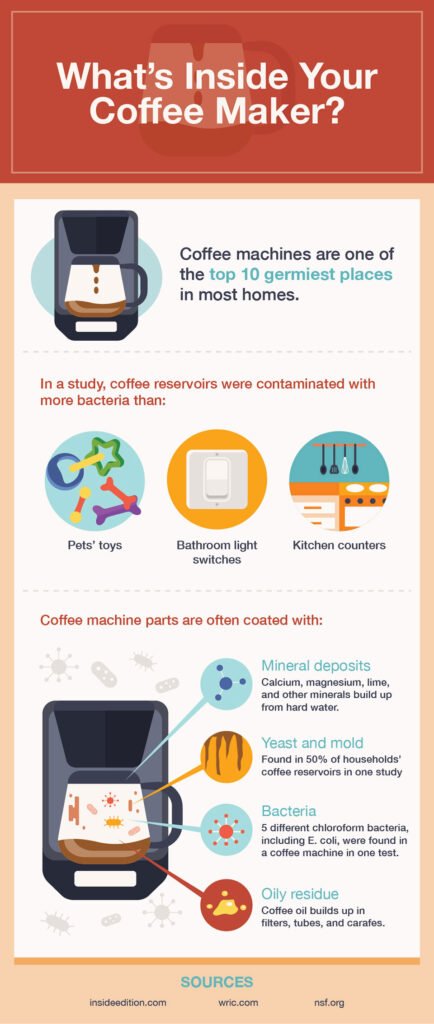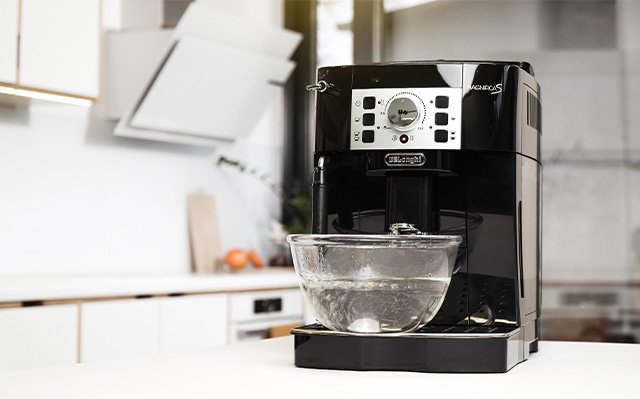How do you know if your coffee machine needs descaling? If you love your morning coffee as much as most people, keeping your coffee machine in tip-top shape is paramount. Descaling is one of those maintenance tasks that can significantly impact the taste and performance of your coffee maker. Let’s walk through the telltale signs and the process of descaling your coffee machine so you can enjoy perfect cups of coffee daily.
What is Descaling?
Descaling refers to the removal of mineral build-up from your coffee machine. This build-up, primarily consisting of calcium and magnesium, comes from the water you use. Over time, these minerals can accumulate inside your machine, affecting both the taste of your coffee and the performance of your machine.
Why Is Descaling Important?
Several reasons make descaling essential.
- Taste of Your Coffee: Mineral build-up can make your coffee taste bitter or off.
- Machine Longevity: Descaling helps extend the life of your coffee machine by preventing clogs and other issues.
- Efficiency: A descaled machine heats water more effectively, ensuring your coffee brews at the optimal temperature.
Recognizable Signs Your Coffee Machine Needs Descaling
Identifying when your coffee machine needs descaling can save you from multiple headaches down the road. Here are some common signs that indicate it’s time to descale.
1. Reduced Coffee Taste and Quality
If your coffee starts to taste different or unpleasant, it might be due to mineral deposits affecting the water flow and temperature.
2. Slower Brewing Time
When minerals build up, they can restrict the water flow, causing your machine to brew coffee at a much slower pace.
3. Loud Operation
A noisy coffee maker is often a clear sign that it’s struggling due to mineral accumulation.
4. Visible Scale Build-Up
Sometimes, you can see the scale build-up on visible parts of the machine like the water reservoir. If you can see it, imagine how much more is inside.
5. Indicator Light
Many modern coffee machines have a descaling indicator light. This helpful feature takes the guesswork out of maintenance.
6. Lukewarm Coffee
If your coffee isn’t as hot as it used to be, mineral deposits may be interfering with the heating element.
| Sign | Possible Cause |
|---|---|
| Reduced Coffee Quality | Mineral deposits affecting taste |
| Slower Brewing Time | Restricted water flow |
| Loud Operation | Machine struggling due to build-up |
| Visible Scale Build-Up | Accumulation in water reservoir |
| Indicator Light | Built-in alert system |
| Lukewarm Coffee | Interference with heating element |

How Often Should You Descale?
The frequency of descaling depends on various factors such as:
- Water Hardness: If your water is hard, descale more often.
- Usage: Frequent usage necessitates more regular descaling.
- Manufacturer’s Recommendation: Always adhere to the guidelines provided by your coffee machine’s manufacturer.
As a rule of thumb, aim to descale every 2 to 3 months. However, if you notice any signs before this period, it’s better to act immediately.
Steps to Descale Your Coffee Machine
Descaling a coffee machine involves a few straightforward steps. Below are detailed instructions tailored to various types of coffee machines.
Drip Coffee Makers
- Prepare Solution: Mix white vinegar and water in a 1:1 ratio. Alternatively, use a commercial descaling solution.
- Fill Water Reservoir: Pour the solution into the machine’s water reservoir.
- Run a Brew Cycle: Start a brew cycle without adding coffee grounds. Let the solution run through the machine.
- Rinse: Once the cycle completes, run 2-3 cycles with plain water to rinse out any remaining solution.
- Clean Removable Parts: Wash the carafe, filter basket, and any other removable parts with warm soapy water.
Single-Serve Machines (e.g., Keurig)
- Empty Machine: Remove the pod and any water from the reservoir.
- Prepare Descaling Solution: Prepare the descaling solution as per the instructions on the package.
- Fill Reservoir: Pour the solution into the machine’s reservoir.
- Run Descaling Cycle: Start the descaling process by running the machine without a pod, following the manufacturer’s descaling instructions.
- Rinse Cycle: Run several cycles with fresh water to completely rinse out the descaling solution.
Espresso Machines
- Prepare Descaling Solution: Mix the solution as per the manufacturer’s instructions or use a mixture of water and citric acid.
- Fill Reservoir: Pour the descaling solution into the water tank.
- Run Descaling Program: Many espresso machines have a special descaling program. Follow the machine’s manual for specific instructions.
- Rinse: Run the machine several times with fresh water to clear out any residual descaling solution.

How to Maintain Your Coffee Machine Besides Descaling
Descaling is vital, but other maintenance steps can also help extend the life of your coffee machine.
Regular Cleaning
- Daily: Rinse removable parts like the carafe, filter basket or pod holder.
- Weekly: Wipe down the exterior and the drip tray.
- Monthly: Deep clean the various removable parts and descale if needed.
Using Filtered Water
Filtered water can help reduce the amount of scale that builds up, which may extend the time between descalings.
Regularly Replacing Charcoal Filters (if applicable)
If your coffee machine uses a charcoal filter, ensure it is replaced regularly as per the manufacturer’s instructions.
Natural Descaling Alternatives
Sometimes you might not have a commercial descaling solution handy. Here are some natural alternatives that can still do the job effectively.
White Vinegar
White vinegar is a popular and readily available option for descaling. It’s acidic enough to break down most mineral deposits in your coffee machine.
Steps:
- Mix equal parts of water and white vinegar.
- Pour the solution into the water reservoir.
- Run a full brewing cycle without coffee grounds.
- Follow it up with 2-3 cycles of plain water to rinse out the vinegar.
Citric Acid
Citric acid is another effective natural descaling agent. You can find it in most grocery stores, usually in the baking aisle.
Steps:
- Dissolve 1-2 tablespoons of citric acid in a quart of water.
- Pour the solution into the machine’s reservoir.
- Run a complete brew cycle.
- Rinse the machine by running several cycles with fresh water.

Common Mistakes to Avoid
Even though descaling your coffee machine is a relatively simple process, there are some common mistakes you should avoid to ensure effectiveness and prevent damage to your machine.
Using Harsh Chemicals
Avoid using harsh chemicals that are not specifically designed for descaling coffee machines. These can damage your machine and leave harmful residues.
Not Rinsing Thoroughly
Make sure to rinse your coffee machine thoroughly after descaling. Failing to do this can leave a sour taste in your coffee and potentially harm your machine over time.
Neglecting Regular Maintenance
Don’t wait until your machine is heavily scaled. Regular maintenance makes descaling easier and more effective.
Troubleshooting After Descaling
Sometimes your coffee machine might act up even after a thorough descaling. Here are a few troubleshooting tips:
Machine Still Brew Slowly
If your coffee machine is still brewing slowly, there might be some remaining scale inside. Consider running another descaling cycle.
Coffee Tastes Off After Descaling
If your coffee tastes off after descaling, make sure you have thoroughly rinsed out the descaling solution. Run a few more rinse cycles if necessary.
Indicator Light Won’t Turn Off
If the descaling indicator light won’t turn off, consult your machine’s manual. Some machines require a specific process to reset the indicator light.
Persisting Loud Operation
If your machine remains loud, check if there are any other issues like loose parts or an incorrectly placed water reservoir.

Conclusion
Knowing when and how to descale your coffee machine is crucial for maintaining the quality of your coffee and the lifespan of your machine. By paying attention to the signs that your machine needs descaling and following the proper steps, you can keep enjoying delicious coffee without any disruptions. Regular maintenance, using the right products, and following best practices make this task easier than it might initially seem. So, take the time to descale your coffee machine every few months—you’ll thank yourself when you’re savoring that perfect cup of coffee.
